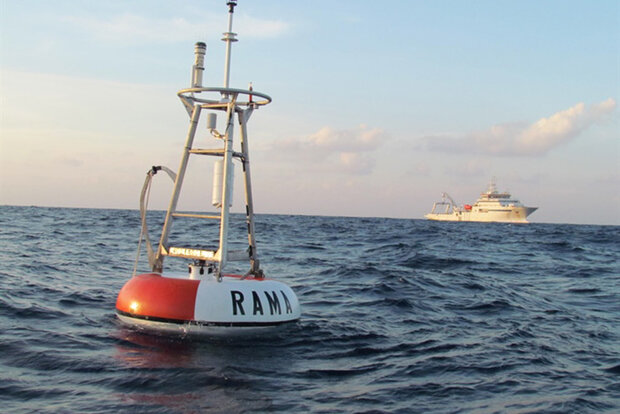Research presents new links between major climate patterns in the tropical Pacific and Indian Oceans
An observation buoy floats in the Indian Ocean. Credit: NOAA
The El Niño-Southern Oscillation (ENSO), an alternating pattern of abnormally warm and cool ocean temperatures in the tropical Pacific, is the driving force behind year-to-year global climate variability. The Indian Ocean has its own climate pattern, the lesser-known Indian Ocean Dipole (IOD), which can and does interact ENSO as well as impact regional and global climate, but this relationship is not fully understood. A new study, supported in part by CPO’s Climate Variability & Predictability (CVP) program and published as an early online release in the Journal of Climate, sheds light on this connection, presenting a new mechanism for diverse interactions between the IOD and ENSO. These climate patterns have a large impact on marine ecosystems in the Indian and Pacific Oceans, and understanding their connection is critical for climate prediction.
Read more at the link below.
